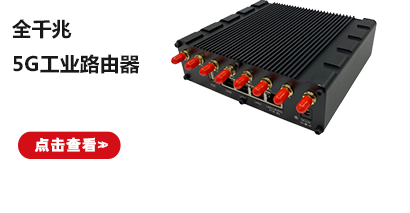What is the difference between an industrial switch and a commercial switch?
Industrial switch refers to industrial production of industrial switch, that is, industrial switch facilities used in industrial control system industry, due to the selection of network standards, it is open and widely used; Can be applied to low temperature continuous high temperature, strong anti-electromagnetic interference, salt spray, strong shock resistance. Here is an introduction to the role of industrial switches and the differences between industrial and commercial switches.

1. What is the difference between an industrial switch and a commercial switch?
1、Generally speaking, the switch generally refers to the industrial switch (excluding the digital switch of electric credit, otherwise the explanation is too complicated).
2、industrial switch is generally divided into: commercial (Gigabit Ethernet) switch, industrial (Gigabit Ethernet) switch, home (Gigabit Ethernet) switch.
3、commercial switch is generally used in the company's office network and other sites, the general form is rack-type, assembled in the company's main machine room, generally stipulated that the stability is relatively high, can be 24 hours uninterrupted long-term operation, relatively large bandwidth, more interfaces and other characteristics.
4、industrial switch is generally used in industrial manufacturing sites, general appearance and assembly of a variety of forms, according to the use of site differences, there are provisions of waterproof, pollution resistance, earthquake resistance, anti-interference signals, of course, stability provisions are also very high, the same to 24 hours uninterrupted long-term operation. Some automatic control systems are used, which stipulate low forwarding delay, some stipulate redundant power supply, DC24V power supply and so on.

2. Characteristics of industrial switch and commercial switch
1、The role of industrial production switch
Industrial production Industrial switch is mainly used in the complex industrial production environment of real-time gigabit Ethernet data transfer. During the design of Gigabit Ethernet, the carrier module monitoring multiplexing collision detection (CSMA/CD mechanism) is used in the complex industrial production environment, and its stability is greatly reduced, thus causing the gigabit Ethernet can not be used. Industrial production industrial switch uses the storage conversion switching mode, while improving the Ethernet communication speed, and embedded intelligent alarm design monitoring network operation, so that in the severe risk of industrial production environment to ensure the reliable and stable operation of gigabit Ethernet.
2、Differences in function and performance parameters between industrial switches and ordinary switches
The difference in function mainly refers to that industrial Ethernet switches are closer to industrial production network communication in function, such as interconnection with various serial communication interfaces, redundancy of facilities and real-time facilities, etc.
The difference of performance parameters is reflected in the application of external environment monitoring system. The natural environment of industrial production not only has many such as: coal mines, ships and other particularly harsh environment, but also has special requirements in EMI (electromagnetic compatibility), environmental temperature, humidity and pollution resistance and other aspects of the natural environment. The impact of ambient temperature on industrial production network devices is the most common.
Electronic components: Industrial Ethernet switch electronic components are selected to a higher standard, to better suit the needs of the industrial production site.
Mechanical natural environment: Industrial Ethernet switches can better apply to the harsh mechanical natural environment, including shock resistance, impact resistance, corrosion resistance, dirt resistance, water resistance, etc.
Climate environment: Industrial Ethernet switches can better adapt to poor climate environment, including ambient temperature, humidity, etc.
Electromagnetic environment: Industrial Ethernet switches have strong anti-electromagnetic interference capability.
Operating voltage: Industrial Ethernet switches have a wide operating voltage range, while common switches have a high voltage standard.
Power supply design: Common switches are basically single power supply, and industrial switches are generally dual power supply mutual backup.
Installation mode: Industrial Ethernet switches can be installed in DIN rail or rack mode. Common switches are usually rack or desktop mode.
Heat dissipation mode: Industrial Ethernet switches generally use fan-less shells for heat dissipation, while common switches use fans for heat dissipation
Well, that's all the content of this article. I hope it can help you to better understand the difference between industrial switches and commercial switches. More information can be viewed on the home page of the official website.


